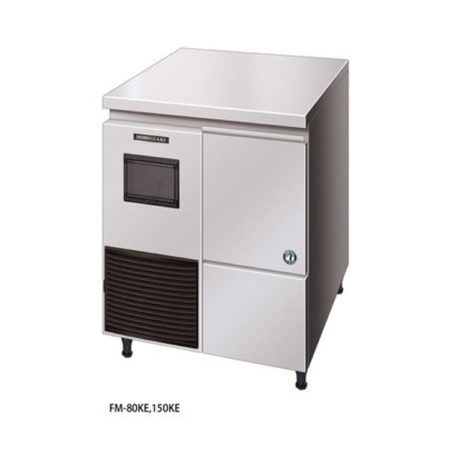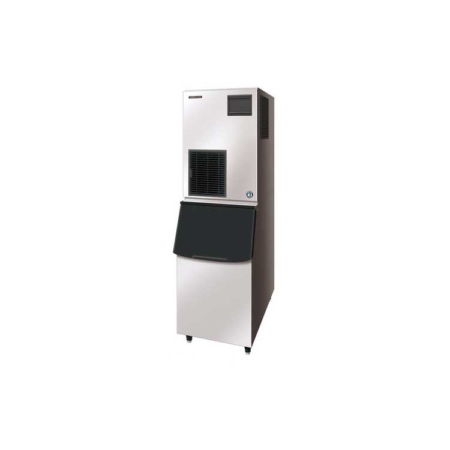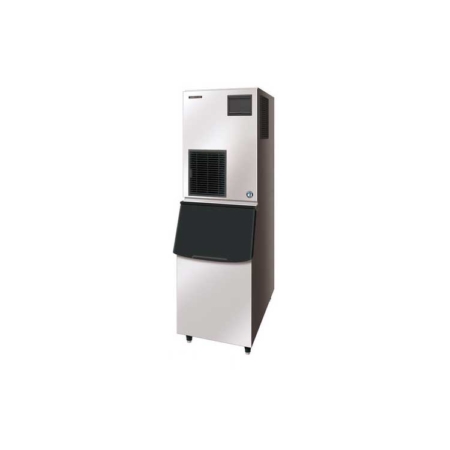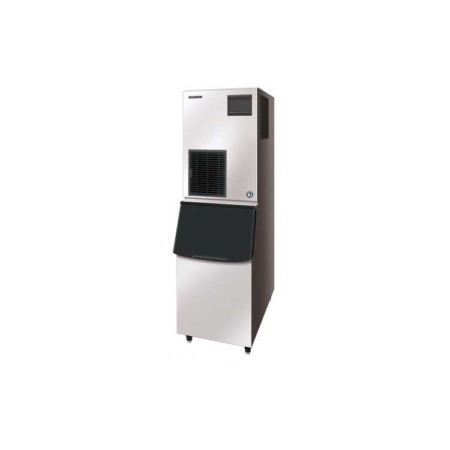Description
Air-cooled, cubelet ice
This Hoshizaki CM-50KE-HC is a cubelet ice maker with built-in bunker that produces up to 55 kg of high quality cubelet ice per 24 hours. Hoshizaki CM ice makers produce cube ice. In cocktails, the dry and hard ice cubes are the ideal coolant as they provide just the right amount of dilution, especially for strong spirits, such as Mojitos and Tiki cocktails. The Hoshizaki CM machines make cubelet ice cream for a variety of purposes. As a result, they are very popular with catering companies, cocktail bars and a number of large European supermarket chains, but also in the medical world and healthcare. The ice is compressed during production, so it melts less quickly. With the ice produced by Hoshizaki ice machines, the phenomenon of “freezer burn” does not occur when presenting fresh fish or other products.
Hoshizaki ice machines in this series can be converted to flake or nugget ice in a relatively inexpensive way, making them significantly more flexible than other machines on the market.
Carbon worm bearings are used in this series, a very robust alternative to roller bearings. This increases the lifespan of your machine and you save on maintenance costs. The auger and evaporator are made of high-quality stainless steel, which also increases the life of these parts, making your machine last longer and requiring less maintenance.
Environmentally friendly ice makers:
Hydrocarbons (KW) are naturally occurring compounds that have proven to be the most climate-friendly and cost-effective refrigerants for heating, cooling and freezing. According to Hoshizaki, hydrocarbons will play an important role in the future of refrigeration technology and the company is leading the way in the production of environmentally friendly ice machines. This means that energy consumption with the use of hydrocarbon icemakers is reduced by up to 20% per unit, which reduces CO2 emissions from energy suppliers and saves you on operating costs. In addition, the units in the FM series use a non-HFC CO2 foam insulation for further savings in operating costs. This keeps the temperature of the unit constant, which in turn contributes to a reduction in direct greenhouse gas emissions.







